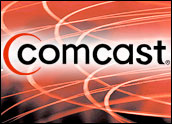
Comcast has grown from a small cable television company in the 1990s to the largest conglomerate in the space, all thanks to Brian Roberts and his father Ralph Roberts. It was a real bootstrapping, entrepreneurial, family-run company that did many great things over the years and helped to transform the industry.
Has it now grown too large? Will Comcast’s current growth plans help or hurt the wireless and television industry? You may be surprised — it’s a little of both.
My Pick of the Week is a brand new technology going backward from cable television to antennas.
Changing Game
Comcast has successfully grown over the last decade or two. In fact, it now also owns NBC Universal, meaning television channels like CNBC and much more.
It still wants to continue to grow and shake things up and do things the way it has always done things in the past. The entrepreneurial bug bites deep. That’s the good part of this story.
However that is also the rub. This reminds me of Microsoft 20 years ago. Think back.
When a small company grows, we cheer it on. However when it grows too large and crosses the invisible line in the sand, anything else it does affects not only the company, but also the entire marketplace. That means consumers, partners, suppliers, investors and more.
So at some point, a company becomes so successful and grows so large it can become a threat. It changes from being a small company that is succeeding to a large leader that rules and controls the industry.
That is where we are with Comcast today. The game is changing. Like Microsoft, Comcast is the new company that is both cheered and feared.
However, the marketplace is changing, and that uncertain future is concerning.
Small companies can’t help or hurt a marketplace. They just grow. But large companies can cause trouble, and unfortunately often do, even though it’s not their intention. Their desire to grow can interfere with other competitors and the entire industry.
Like it or not, at some point companies grow too large and too important and have too much impact on the marketplace and the economy. That’s typically when the government steps in and tries to control their actions in the future and protect the industry. Sometimes that works, and other times it doesn’t.
Consider the new plan for Comcast to sell its wireless spectrum to Verizon Wireless. In fact, it is not just Comcast but Time Warner, Cox and the entire SpectrumCo.
Comcast, Verizon Merger?
Looking at this from Comcast’s perspective, the deal makes perfect sense. In fact, looking at it from Time Warner’s, Cox’s and Verizon Wireless’ perspective, it all looks good.
The trouble comes from the impact on the rest of the industry — meaning all the competitors, customers and investors.
The burning question is simple: Why was this deal not put out for open bidding?
Surely, Comcast and SpectrumCo could have made more money — especially when large competitors like AT&T and smaller competitors like Sprint Nextel, C Spire, T-Mobile, U.S. Cellular, TracFone and MetroPCS would all love a piece of that pie.
There must be a reason that has been agreed to by these parties.
Another interesting step in this journey involves Verizon Wireless, which will start to sell Comcast television in its wireless stores. Hmm. Verizon will stop selling its own Verizon FiOS television and sell its competitor’s service instead.
Does this make sense to you? What does this mean for the future of FiOS? Could Verizon start backing away from its Internet television plans?
If so, this is not a good sign for the competitive marketplace.
Could this mean a potential Comcast Verizon merger down the road? Crazier things have happened in the past. Remember when AT&T acquired the cable television company TCI in the late 1990s? That didn’t work out, but it did happen.
Maybe later this year, when Apple TV, Google TV and Intel TV are introduced, the entire television industry will be reinvented, like the music and smartphone businesses were with the iPod and iPhone and Android.
More Spectrum
So this current Comcast, Verizon deal would be helpful to these companies, but would it be harmful to the marketplace? The answer is a little of both, depending on who is asking.
The reason is simple: The wireless marketplace has changed over the last few years. Four years ago, the Apple iPhone was born. Next Google Android.
However, in just the last few years, the entire trajectory of the wireless industry has changed.
It is no longer about voice or messaging. Today, it’s about wireless data. It’s about spectrum. It’s about the spectrum shortage that threatens carriers that don’t have it.
That’s why AT&T tried to acquire T-Mobile. It needed spectrum. That’s why AT&T is acquiring spectrum from Qualcomm FloTV.
And that’s why Verizon Wireless needs this spectrum from Comcast and the cable television industry.
There are two sides to this. On the side of Comcast, Time Warner, Cox and Verizon, the effort makes sense. They will benefit.
However, from the other side, it does not make sense. This deal, while helpful to the companies involved, would be harmful to the industry in general and all the other competitors.
All competitors need access to more spectrum to remain competitive.
The reason is simple. Wireless data will continue to grow, and over the next few short years will account for 97 percent of the usage of wireless phones. Only 3 percent will be used for voice. This is a complete reversal over just a few short years.
We see that AT&T and Verizon are grabbing as much as they can, as quickly as it can. But what about the other carriers? What about the competitive playing field?
That’s the key point here. This is the key question we have to answer for the health of the industry.
Equal Access
So what is the answer? We have to make some decisions. Do we just want AT&T and Verizon as the two key competitors, or do we want as many as we have today (which, by the way, is fewer than ever before)?
Do we want Comcast changing and leading the wireless space as well as cable television? Do we want new innovative technology to change the television space like it has already changed the music and smartphone space?
Ask consumers, and they say give them choice. They want many competitors, all offering the same services. That will keep prices low and service high, while fostering innovation.
Comcast and Verizon Wireless want this deal. Other carriers don’t. What’s the solution?
I have suggested a solution: equal access. Pool all the spectrum together, and let all wireless carriers pay to have access to it. That will create a level playing field and benefit everyone.
However, when we pull back the camera, we see a larger problem. Industry after industry is reinventing itself. This past decade and the next will transform everything we think we know about the tools and technologies we use for our personal and business life.
We are at a crossroads today.
We have to make some hard decisions about the future of the wireless and television industries. We are quickly running out of wireless data capacity, and the television industry will be the next to step into the transformation chamber.
We have to make a hard decision on the direction of the industry going forward.
That is the choice we have before us today. of television, customers are fleeing back to old-fashioned antenna TV and embracing Internet television.
The antenna has come a long way and, in fact, is saving many customers a fortune. Let me explain.
Cable television customers pay an average of 5-6 percent more, year after year. That means every 10 years, the price of cable TV doubles. Depending on what you buy, you could be spending $75 to $150 per month for pay TV.
Years ago, our choice was either a few broadcast channels or many cable channels.
Today, however, the choice is much different.
Technology has gotten to the point where it is a) cheaper and b) more innovative to try new things.
Did you know the major networks now operate multiple channels? That means you can simply attach a $15 antenna to your television and receive dozens of broadcast channels for free from ABC, NBC, CBS, Fox and others, along with the independent channels in your area.
It’s not unusual to get 40 to 50 channels of broadcast television at no cost. That is what many pay for with cable television.
That’s right. You may be paying your cable television company or your phone company or your satellite television company for all these channels you can now get for free.
Then, if you want to spend some money, you can buy a device to bring pay Internet television into your home. That will cost about $15 to $20 bucks a month and you can watch movies and television shows from companies like Netflix, Amazon and Hulu.
Yes, the television world is changing.
So far, about 5.1 million homes have moved away from pay television, and the number is growing quickly. How many homes are there in the U.S.? Maybe a little more than 100 million, and cable television has only penetrated about two-thirds of them.
So, this is already making a big dent.
Something else to think about — later this year, expect to see more options from Apple TV, Google TV and now even Intel TV. Others will likely join this race.
The threat is for traditional pay TV services. The opportunity is for all these new innovative services. And the winner will be the customer and investors in some of these services. The question is, which ones?
Enjoy!













































As always, a thought provoking read-thanks. The sooner the playing-field is leveled, the sooner we will have some decent competition and choice. In the same way the AT&T/T-Mo deal was detrimental to competition, so too is this. If cell providers like Tracfone for example, were given the choice of selling better handsets, Sprint or T-Mobile the option of bidding for Comcast spectrum, we would see a totally different picture, where consumers could actually choose the carrier that offered the best service or deal, instead of which consumers are forced into a corner, where they have few choices if they want speed/a specific handset/reliable coverage. You are spot on the mark with your statement "We have to make a hard decision on the direction of the industry going forward."